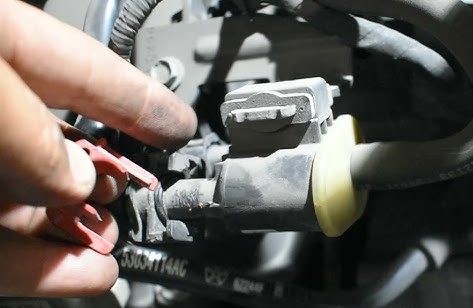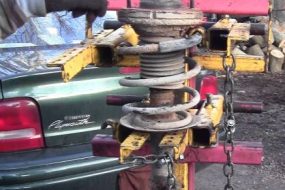
A bad purge valve can cause numerous issues in a car’s emission control system which can affect the engine performance, fuel efficiency, and overall health of the car.
While driving with a bad purge valve may be possible for a short time, it is not advisable in the long run because of the dangers it poses to your engine. Therefore, how long can you drive with a bad purge valve?
You can drive a car with a bad purge valve for 30 – 50 miles provided the issue is fixed as soon as possible. Driving with a bad purge valve for too long may lead to catastrophic damages to you engine. Therefore, the earlier you fix or replace a bad purge valve, the better.
Can You Drive with a Bad Purge Valve?
Yes, you can drive with a bad purge valve but the driving will not be as pleasant as it used to be because of the bad purge valve. You will start experiencing reduced engine performance as well as poor gas mileage, etc.
How Long Can You Drive with a Bad Purge Valve?
You can be able to drive 30 – 50 miles with a bad purge valve before fixing the problem. This is because, driving with a bad purge valve can be problematic, and generally not recommended.
Therefore, if you must drive with a bad purge valve, it should be within 30 – 50 miles. While it is possible to drive with a bad purge valve for a short distance, it’s not advisable to do so for an extended period to avoid causing more problems for yourself.
What Happens if You Don’t Fix a Purge Valve?
Here are what happens if you don’t fix a bad purge valve:
1. You Will Experience Poor Gas Mileage
When the purge valve is not functioning correctly, it can cause a disruption in the balance between fuel and air in your engine. This imbalance can lead to inefficient fuel combustion, resulting in poor gas mileage. Over time, this can increase your fuel consumption and cost you more money at the pump.
2. It Will Lead to a Poor Engine Performance
A faulty purge valve can affect the proper functioning of the engine causing a poor engine performance. You may experience the following problems:
- Rough Idling: Your engine may run unevenly when idling, causing vibrations and discomfort.
- Stalling: In some cases, the engine may stall, particularly at low speeds or when coming to a stop.
- Hesitation: You may notice a delay or hesitation when accelerating, which can impact your ability to merge onto highways or pass other vehicles safely.
- Reduced Power: The engine may not deliver the power it should, making it difficult to climb hills or overtake slower vehicles.
3. It Will Cause the Check Engine Light to Come On
A bad purge valve will trigger the check engine light on your vehicle’s dashboard. This warning light is an indication that there is a problem with the vehicle’s emissions control system.
While ignoring this warning could result in more severe issues with your vehicle over time, it can be frustrating and uncomfortable seeing the check engine light on your dashboard.
I don’t like having any warning lights on my dashboard, be it a check engine warning light or an ABS light. It makes me uncomfortable and makes the driving uncomfortable for me. I will not rest until I diagnose the cause of the light and have it fixed.
4. It Will Lead to an Increased Emissions
The evaporative emissions control system, which includes the purge valve, is designed to capture and control harmful gasoline vapors and prevent them from being released into the environment.
When the purge valve is faulty, it may fail to properly control these emissions, leading to an increase in harmful pollutants being released into the atmosphere. This is not only bad for the environment but may also result in your vehicle failing emissions tests or inspections required in some regions.
5. Potential Engine Damage
While a bad purge valve itself may not cause direct damage to your engine, the resulting issues with fuel mixture, incomplete combustion, and poor performance can put additional stress on your engine over time. This can lead to more significant and costly engine problems, which may require extensive and expensive repairs.
How to Know if a Purge Valve is Bad?
To know if your purge valve is bad, you should:
- Scan Your Car With OBD-II Scanner: The best way to know if a purge valve is bad is by scanning your car’s computer, it should be able to tell you through a trouble code that the purge valve is bad.
- Check Engine Light on your Dashboard: Another indicator of a bad purge valve is the illumination of the check engine light on your vehicle’s dashboard. The bad valve will trigger an error codes related to emissions control or the evaporative emissions system that will cause the CEL light to come on.
- Unusual Noise from the Purge Valve: Sometimes, a bad purge valve may produce unusual hissing or clicking sounds, which can be heard near the location of the valve.
- Emissions and Gasoline Smell: If the purge valve fails to control gasoline vapors, you may notice a strong gasoline odor near your vehicle or an increase in harmful emissions. This can be a sign that the evaporative emissions system is not functioning properly.
- By visually inspecting the Purge Valve: By physically inspecting the purge valve and its associated hoses and connectors, you can be able to tell if it is bad or not. Look for any visible signs of damage, such as cracks, leaks, or disconnected hoses. Ensure that the connections are secure and that there are no loose or damaged components.
Be that as it may, you can also know if your purge valve is bad by functionally testing the valve with the engine off. You can start by:
- Disconnecting the purge valve’s electrical connector.
- Remove the purge valve from its mounting location.
- Blow into one end of the valve, and then apply a voltage (usually 12V) to the valve’s terminals.
- You should be able to feel airflow through the valve when voltage is applied.
- If there is no airflow or if the valve is stuck open or closed, it may be malfunctioning.
Moreover, if your car is hesitating when accelerating, stalling unexpectedly, feeling underpowered, and running rough and uneven. It could also indicate that the purge valve has gone bad. Scanning the car for a trouble code is the best way to find out.
Conclusion
You should be able to drive between 30 – 50 miles with a bad purge valve, however, you should have the valve replaced or fixed as soon as possible to maintain the health of your car. Driving for long with a bad purge valve is not recommended because of the dangers it has on your car as well as the environment.
Therefore, if you need to drive with a bad purge valve temporarily, it’s important to be aware of the potential issues and have the problem resolved as soon as it is safe and convenient to do so. Continuing to drive with a bad purge valve can lead to more significant and costly engine problems over time.


